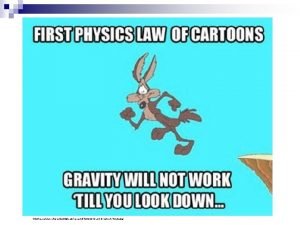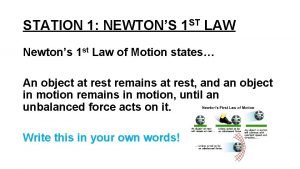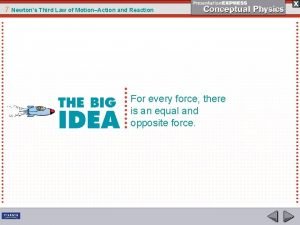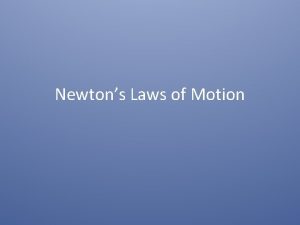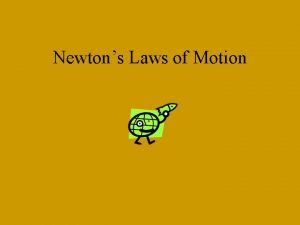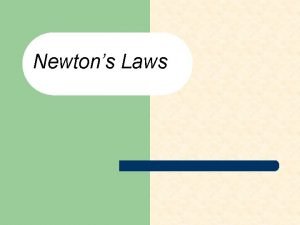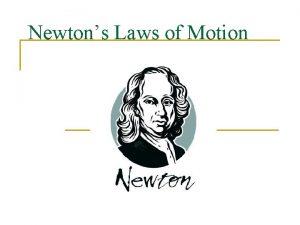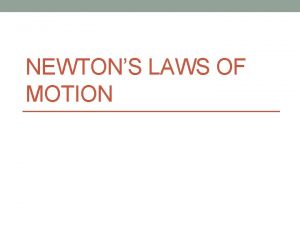Newtons Laws of Motion First Law of Motion














- Slides: 14

Newton’s Laws of Motion

First Law of Motion “A body will remain at rest or will continue to move with constant velocity unless external forces cause it to do otherwise” This means that unless something else, such as friction or another force affects the body, it will continue to have the same velocity. Forces are measured in Newtons (N)

Examples 10 N This object will continue to accelerate to the left as that is the only force applied to it.

10 N This object will continue to have the same velocity. If it was already moving, it will stay at the same speed. If it wasn’t moving, it still won’t move.

Practice What direction will this body move in? 5 N 10 N

What is the Resultant Force? 5 N 7 N 16 N

Newton’s Second Law of Motion F=ma Force (N) =mass (kg) times acceleration (m/s 2) The force is proportional to the mass of the object it’s being applied to and that object’s acceleration

Examples A body, A has mass 2 kg and has a force of 50 N applied to it, what is it’s acceleration? Solution F=ma therefore a=F/m F=50 N m=2 kg a=25 ms 2

If a body of mass 5 kg is accelerating at 2 ms 2, what force has been applied to it? Solution F=ma m=5 kg a=2 ms 2 F=5 x 2=10

Practice A body has a mass of 500 grams, if it is moving at i) 20 ms 2 ii) 15 ms 2 iii) 27 ms 2 what force has been applied to it?

What is the acceleration of this wheel? (It has a mass of 40 kg) 10 N 50 N

Newton’s Third Law of Motion “Action and Reaction are Equal and Opposite” This means that if two things are in contact with each other, one of them pulls with the same magnitude of force that the other one is pushing.

You can test this out: push your hand against that of your neighbor, or push down against your desk. There is an equal reaction to you pushing down- otherwise the table would collapse onto the floor. 500 N

Examples Friction is the most common application of Newton’s Third Law. If you push something very gently, it may not move. This is the opposite reaction, friction, stopping it moving. Some materials have more friction than others, such as glue. How many materials can you name that have strong friction?
 Newton's 1st law meme
Newton's 1st law meme Newtons first law
Newtons first law Colin skateboards down the sidewalk
Colin skateboards down the sidewalk Newtons first lw
Newtons first lw The three laws of motion
The three laws of motion 3 law
3 law Newton 1st law
Newton 1st law Facts about newtons first law
Facts about newtons first law Newtons first law pictures
Newtons first law pictures Newtons 3 rd law of motion
Newtons 3 rd law of motion Newtons 3 rd law of motion
Newtons 3 rd law of motion Newtons third law of motion
Newtons third law of motion Newtons 3 rd law of motion
Newtons 3 rd law of motion Newtons third law
Newtons third law Newton's third law
Newton's third law
